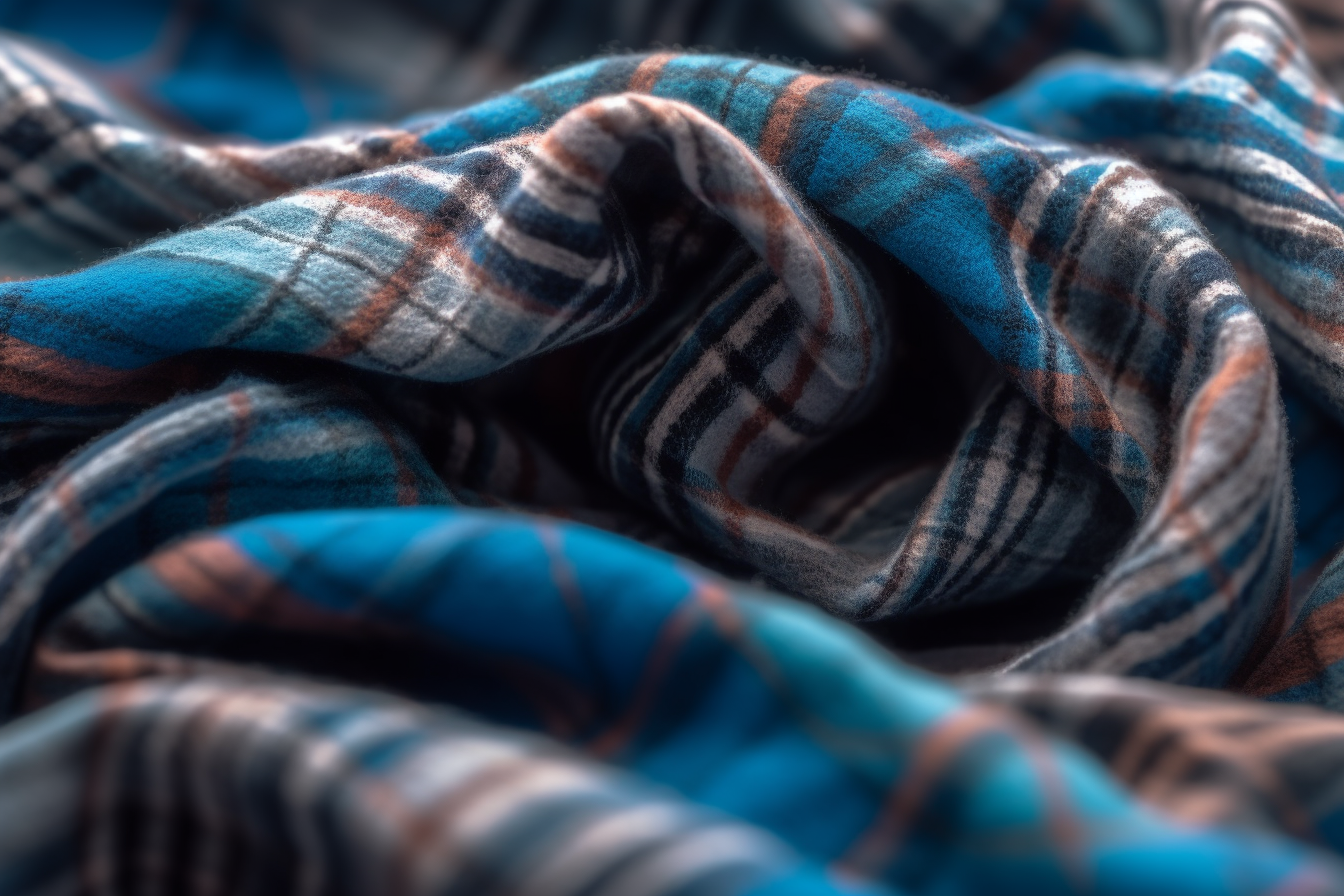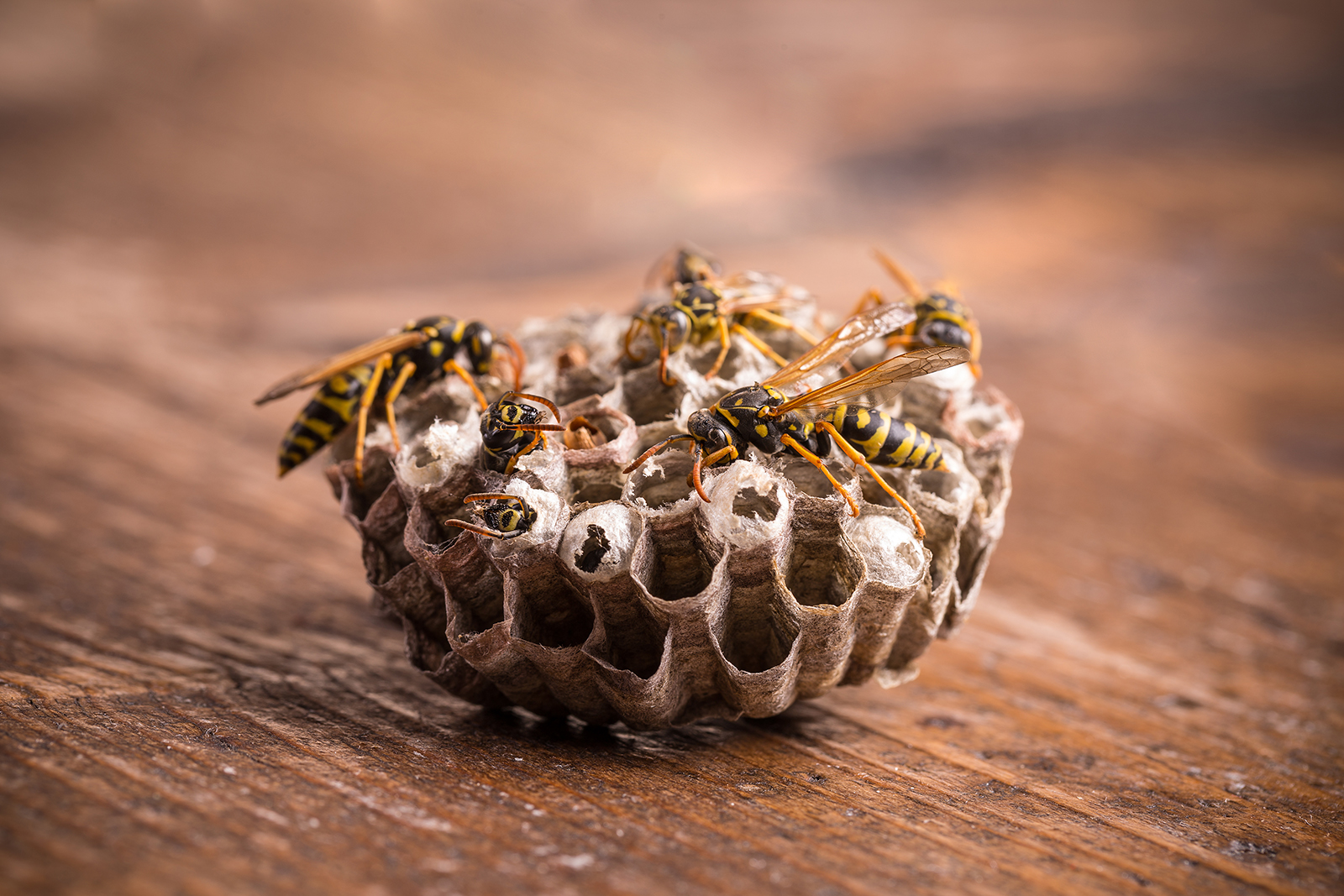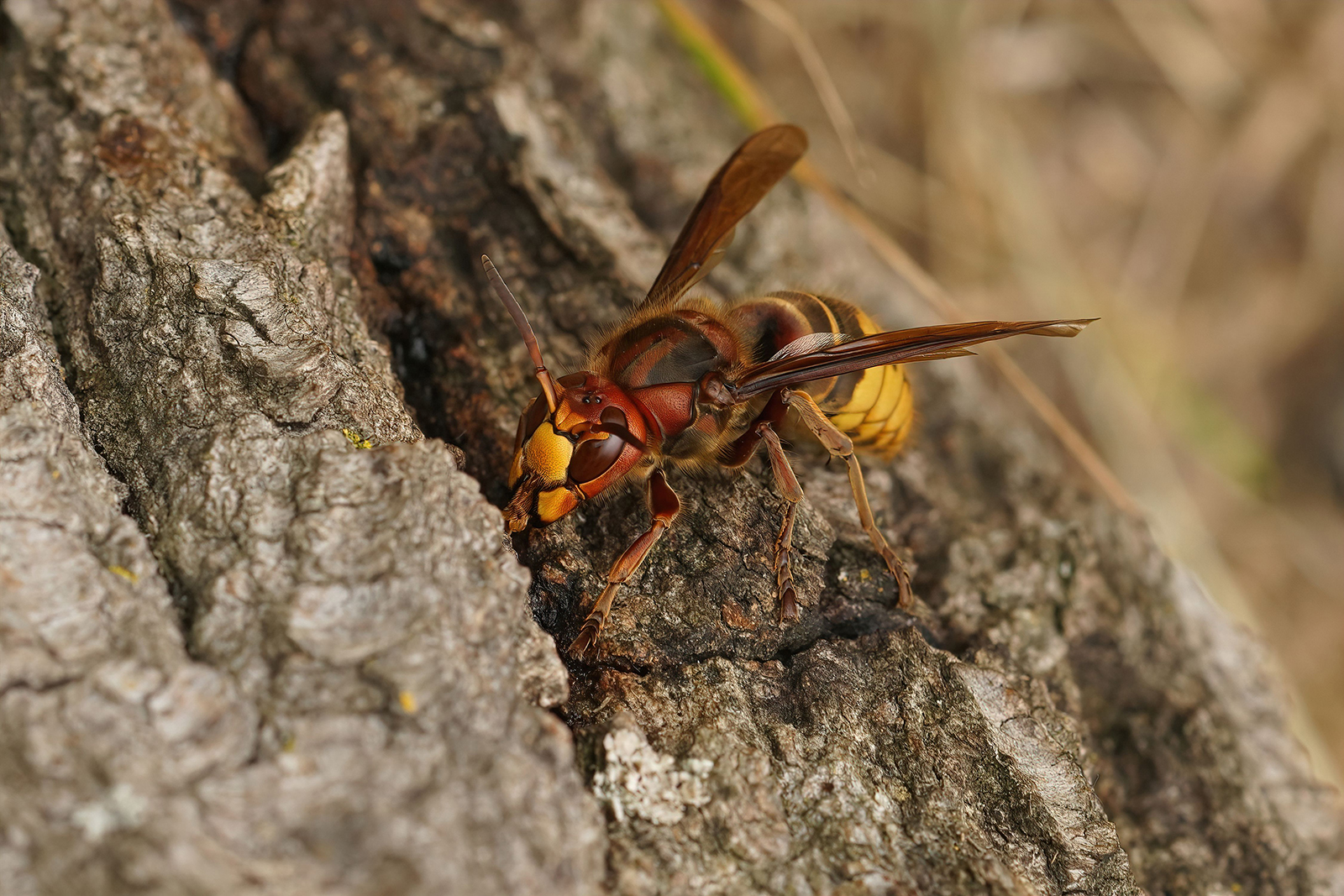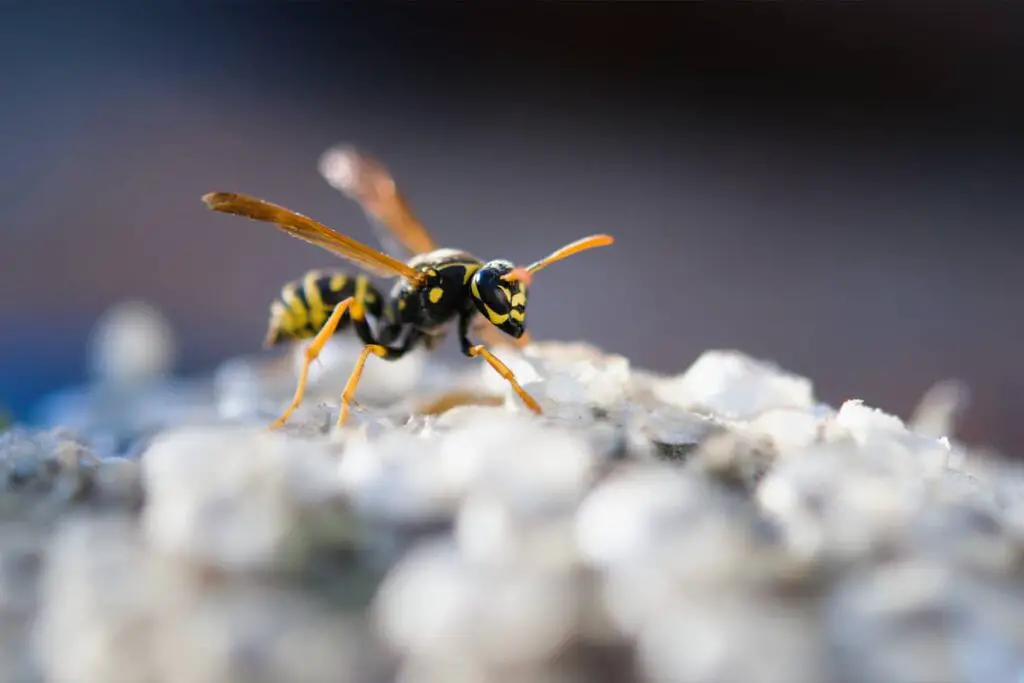
As someone who’s had their fair share of encounters with wasps, I’ve often wondered if they can sting through our clothes. With a little (sometimes painful) research, I think I’ve got to the bottom of it.
Wasps are capable of stinging through most lightweight clothing, such as shirts, due to their thin material and loose threads. Their stingers may have more difficulty penetrating thicker fabrics, with heavier clothes with tightly-woven threads offer the best protection against potential stings.
It’s essential to understand that while clothing may offer a certain level of security, it isn’t foolproof, and one must still exercise caution when near wasps to avoid getting stung. With this information, I hope to make our summer outings a little safer and more enjoyable despite the presence of these pesky insects.
Can Wasps Sting Through Clothes
In my experience wasps can indeed sting through clothing. However, their ability to do so depends on the type of material and the tightness of the fabric’s weave. Wasp stingers can penetrate most types of clothes, but they have limited reach, so wearing heavier clothes can help protect against wasp stings. Tightly woven clothing is also more effective since the threads in the fabric make it more difficult for the stinger to get through (PestLockDown).
When a wasp lands on me, I’ve found that the best approach is to remain calm and avoid sudden movements. Flapping or attempting to swat the wasp away may provoke it, making it more likely to sting. If a wasp gets caught in my clothing and my movements continue to agitate it, I have a much higher chance of getting stung.
To reduce the risk of wasp stings I usually opt for lighter-colored clothing, as wasps are attracted to bright and bold colors. Additionally, I avoid wearing scented personal products, such as perfumes or body lotions, that might attract wasps.
I would also recommend keeping some basic first aid items on hand when spending time outdoors, such as an ice pack and antihistamine cream. In the event that someone does get stung, treating the sting immediately can help minimize discomfort and prevent complications (Healthline).
Factors Influencing Stinging Through Clothing
Here are some insights into the factors that influence whether a wasp can sting through clothing, from someone who’s been stung one too many times.
Type of Clothing Material
I’ve learned that the type of clothing material plays a crucial role in determining how easily a wasp can sting through it. For instance, tightly woven fabrics can help prevent wasp stings as the threads make it more difficult for the stinger to penetrate the material. On the other hand, lightweight and looser-woven fabrics, like those commonly found in shirts, typically offer less protection..
Thickness of Clothes
Another factor to consider is the thickness of the clothes you’re wearing. From my experience, I’ve found that wearing thicker or heavier clothing can provide better protection against wasp stings. This is because a wasp’s stinger has limited reach and finds it more difficult to penetrate thicker materials.
Clothing Fit and Coverage
Lastly, the fit and overall coverage of the clothes you wear can also influence the likelihood of getting stung by a wasp. I’ve observed that clothing that fits tightly to the body can make it difficult for a wasp to sting since it might not have enough space to move its stinger effectively. Furthermore, wearing clothes that cover more of your body can help reduce the amount of exposed skin and thus mitigate the risk of stings (CDC).
In summary, to minimize the chances of getting stung by a wasp through my clothes, I pay attention to the type of clothing material, the thickness of the clothes, and the fit and coverage they offer.
Different Types of Wasps and Their Stinging Ability
Yellow Jackets
Yellow Jackets are easily identifiable by their bright yellow color, with orange and brown markings. They are commonly found in Texas, Arizona, and New Mexico, and can grow up to 1.2″ (3 cm) long (Leafy Place). Although their stingers can penetrate clothing, tightly woven and thicker materials may prevent them from reaching the skin. Nevertheless, caution should be exercised around these wasps, as they can be aggressive and may attack if provoked.

Paper Wasps
Paper Wasps are larger, with slender bodies measuring around 3/4 inches long and are variously colored – yellow, brown, red, and/or black (Oklahoma State University Extension). These wasps create open-faced paper nests, usually attached to building eaves. They can become aggressive when their nest is disturbed, and multiple wasps may sting in defense. I recommend wearing heavier and tightly woven clothes when around their nests to minimize the risk of getting stung.

Hornets
Hornets are larger than both Yellow Jackets and Paper Wasps. Hornets typically have a combination of dark brown and yellow-orange markings on their bodies. They are known for being territorial and can become aggressive when their nest is threatened. Similar to other wasps, their stingers can penetrate clothing made of loose or lightweight fabrics.
Understanding the different types of wasps and their stinging abilities can help prevent painful encounters while enjoying the outdoors. It’s important to be cautious and respectful around these insects and wear appropriate clothing as a protective measure.

Wasp Sting Symptoms and Reactions
Being stung by a wasp is an experience I wouldn’t wish upon anyone. The immediate symptoms and reactions can vary depending on the individual and the severity of the sting. In this section, I will describe the different types of reactions, ranging from mild to severe, including anaphylaxis.
Mild Reactions
I’m lucky in that I have had relatively mild reactions to wasp stings. Symptoms can include:
- Pain and burning sensation at the site of the sting
- Redness and swelling
- Itching around the affected area
Everyday Health states that these symptoms are common and usually not a cause for concern. However, I always monitor the affected area to ensure the symptoms don’t worsen over time.
Severe Reactions
Some individuals may experience more severe reactions to wasp stings. According to Healthline, severe reactions can include:
- Intense pain
- Large-scale swelling of the affected area or other body parts
- Hives or itching in areas not directly affected by the sting
- Difficulty breathing
If I were to experience any of these symptoms, I would seek medical attention immediately.
Anaphylaxis
The most severe reaction to a wasp sting is anaphylaxis. This is a rare but life-threatening allergic response that requires immediate medical intervention. These include:
- Rapid or weak pulse
- Swelling of the face, lips, or throat
- Shortness of breath or difficulty breathing
- Abdominal pain, nausea, vomiting, or diarrhea
As suggested by Verywell Health, anyone who is at risk of anaphylaxis should carry an epinephrine auto-injector (EpiPen) with them and seek emergency medical care if they experience a wasp sting.
Preventing Wasp Stings
Wearing Protective Clothing
When I need to be near wasps I make sure to wear protective clothing to minimize the chances of getting stung. I avoid lightweight clothing, as wasps can easily sting through such materials. Instead, I opt for thicker layers of clothes that cover large parts of my body, including long pants and long-sleeved shirts. Wearing gloves can also help protect my hands, though I have to ensure they are thick enough, as wasps can sometimes sting through gloves.
Avoiding Wasp Attractants
To minimize wasp encounters, I avoid things that attract them. Food, particularly sugary and protein-rich options, can lure wasps quickly. I ensure that I store food properly and keep outdoor dining areas clean. Avoiding certain scents, such as floral perfumes and scented lotions, can also be helpful, as these can attract wasps too. Additionally, when I’m outdoors, I try to wear clothing in neutral or white colors, since wasps are less attracted to these hues.
Dealing with Wasp Nests
If I discover a wasp nest near my home, I exercise caution and avoid disturbing it. Disturbing a nest can provoke the wasps, increasing the possibility of getting stung. Sometimes these nests can be safely left in peace, but if I need one removed I call a profesional.
Treatment for Wasp Stings
In this section, I’d like to share some useful information on how to treat wasp stings. It’s important to know what to do in case you or someone in your vicinity gets stung by a wasp, despite taking preventive measures like wearing protective clothing.
Home Remedies
If you get stung by a wasp, the first thing to do is to wash the affected area with warm soap and water to remove any bacteria or venom left by the wasp (WebMD). After cleaning the site, you may try applying a cold pack or a cloth-covered ice pack to help reduce pain and swelling. Keep the ice pack on for about 10 minutes and repeat as needed.
Another home remedy to consider is applying apple cider or white vinegar to the affected area. To do this, soak a cotton ball with vinegar and place it on top of the sting, using slight pressure to help with the pain and inflammation (Healthline).
Over-the-Counter Options
Over-the-counter products can also help in treating wasp stings. You may consider using a topical antihistamine or a hydrocortisone cream to alleviate itching and inflammation. Pain relievers such as acetaminophen or ibuprofen can be taken to help manage the pain caused by the sting.
In case of experiencing an allergic reaction, an over-the-counter antihistamine medication such as diphenhydramine (Benadryl) could be taken to help relieve symptoms. However, always read the labels and follow the recommended dosages for any medication.
Medical Intervention
If you think you or someone else might be having a severe allergic reaction (anaphylaxis) to a wasp sting, it’s important to seek medical help immediately. Symptoms of a severe reaction include difficulty breathing, rapid heartbeat, swelling of the face or throat, and feeling lightheaded or faint. People with known allergies to wasp stings should carry an epinephrine auto-injector (like an EpiPen) and use it as instructed if they get stung.
Remember, if you’re ever unsure about the severity of a wasp sting or how best to treat it, don’t hesitate to reach out to a healthcare professional for advice and assistance.
Conclusion
I found that wasps are capable of stinging through most types of clothing, although heavier and tightly woven fabrics are more effective at preventing stings. It is important to be aware of your surroundings while outdoors, as wasps can sting through a variety of materials, including jeans and shoes.
Keeping calm when encountering wasps is also essential, as they are less likely to sting if they don’t feel threatened by excessive movement. Wearing multiple layers of clothing, including gloves, can provide some protection against wasp stings.
Remain vigilant and take certain precautions when engaging in outdoor activities during wasp season. Dressing appropriately, staying calm, and avoiding risky situations can greatly reduce your chances of being stung.
Good luck!
Driven by a passion for those tiny creatures that rule our world, we at Bug Domain strive to be your go-to resource for information on insects.




